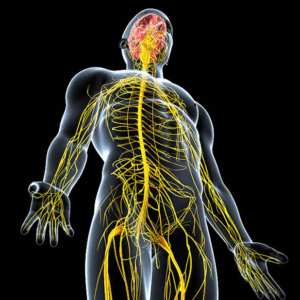Description
Anti-epileptic drugs: What you need to know, A introductory look
Anticonvulsants (also known as anti-epileptic drugs or seizure medications) are a broad class of pharmaceutical medicines used to treat epileptic seizures. Unfortunately, the public often misunderstands these drugs, so there is some confusion over what they do and how they work.
Anti-epileptic drugs may also be used when there is no diagnosis or when other treatments have not worked to control seizure activity. A neurologist can prescribe anti-epileptic medicines to help reduce the frequency and intensity of these attacks as well as limit any attendant cognitive defects such as memory loss or confusion that might occur during an attack. In addition to, the goal of anticonvulsant treatment is to stop seizures and minimize their severity; though there is no cure for epilepsy itself, therapy can help control it and reduce the number of seizure attacks. Anti-epileptic drugs Can also be used for other treatments such as surgery, which may also be necessary in some cases.
Pharmapk cares deeply about maintaining high standards, and they never compromise on quality. We want to ensure that your experience with us is nothing short of excellent – which means we only work in facilities where every batch can meet up all requirements from the start till finish! When customers receive anti-epileptic drugs, they’ll be pure without any mistakes along its journey through production because Pharmapk is committed to delivering top-quality medicines.
What you need to know about epilepsy Epilepsy?
Epilepsy is a chronic neurological disorder that can be debilitating and even life-threatening. It occurs when the brain experiences abnormal electrical activity, which causes seizures. The cause of epilepsy is usually unknown, but it could be caused by head trauma, stroke, tumor, or infection. There are many types of epileptic attacks, and symptoms differ depending on the type and severity of each attack.
Anti-epileptic drugs: How do they work?
There are many different types of anti-epileptic drugs, but they all have the same goal: to control seizures. They work by affecting the levels of chemicals in your brain and body that can trigger a seizure attack. Unfortunately, there is no single drug specially designed for epilepsy.
The most common type is an anticonvulsant; this includes drugs like phenytoin, carbamazepine, valproic, sodium valproate, lamotrigine, levetiracetam, and topiramate. These drugs help stop or reduce seizures when they happen and also make it less likely that a person will have another seizure in the future. The other primary type of medication used to treat epilepsy is called an anti-seizure drug. These medications, also known as anti-epileptic drugs or AEDs, are designed to stop seizures by regulating the body’s electrical activity.
Epileptic drugs: Side effects and risks of overdose
The side effects of anti-epileptic drugs are a concern for many patients who take them. There are three main categories, namely neurological, psychiatric and physical. The most common symptoms include dizziness, headache, tiredness, agitation, tremors, hair loss or sometimes unwanted hair growth, and swollen gums. Other side effects may be temporary or permanent in nature, depending on the specific drug that is being taken.
The adverse effects of anti-epileptic overdose are varied and depend on the type, dosage, and timing of medication that has been taken. A person who has overdosed on an anti-epileptic drug may experience a range of symptoms such as seizures, coma, respiratory depression, and impaired consciousness, which could lead to brain damage and even death if left untreated. Therefore, any individual needs to be aware of the potential side effects associated with taking their prescribed medications so they can be treated quickly if necessary.
Dosage guide and strength of anti-epileptic drugs Carbamazepine
Immediate-Release tablets
- 200mg immediate-release tablet contains 200mg carbamazepine per tablet.
Delayed-Release tablets
- 100mg delayed-release tablet contains 100mg carbamazepine per tablet.
- 200mg delayed-release tablet contains 200mg carbamazepine per tablet.
- 400mg delayed-release tablet contains 400mg carbamazepine per tablet.
Chewable tablets
- 100mg oral chewable capsule contains 20mg carbamazepine per capsule.
Delayed-Release capsule
- 100mg delayed-release capsule contains 100mg carbamazepine per capsule.
- 200mg delayed-release capsule contains 200mg carbamazepine per capsule.
- 100mg delayed-release capsule contains 300mg carbamazepine per capsule.
Oral suspension
- 100mg/5ml suspension contains 100mg carbamazepine per 5ml oral suspension (20ml single dose vial).
IV Solution.
- 10mg/ml suspension contains 10mg carbamazepine per ml IV solution.
Phenytoin
Chewable tablets
- 50mg oral chewable capsule contains 50mg phenytoin per tablet.
Immediate-Release capsule
- 30mg Immediate-release capsule contains 30mg phenytoin per capsule.
- 100mg Immediate-release capsule contains 100mg phenytoin per capsule.
Extended-Release capsule
- 100mg Extended-release capsule contains 100mg phenytoin per capsule.
- 200mg Extended-release capsule contains 200mg phenytoin per capsule.
- 300mg Extended-release capsule contains 300mg phenytoin per capsule.
Oral suspension
- 125mg/5ml suspension contains 125mg phenytoin per 5ml oral suspension.
IV Solution.
- 50mg/ml suspension contains 50mg phenytoin per ml IV solation






Reviews
There are no reviews yet.